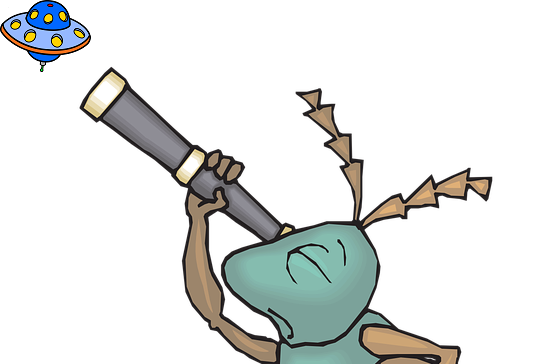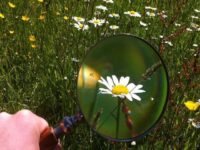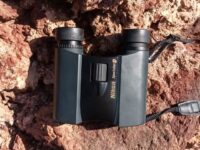This post contains affiliate links. If you follow a link I may earn a small commission at no extra cost for you.
The universe has always inspired the imagination of the people. What kind of secrets is the universe hiding? Will we ever be able to travel to faraway planets? Especially children are fascinated by the almost infinite vastness of the universe and its great secrets. A good telescope for kids may encourage them in their desire to explore the world around them and may spark an interest in science.
However, it is not always easy to find the best telescope for kids and often mistakes are made. I think that children are not to be inspired by the most expensive telescope around that needs to be handled with great care. But rather with a good telescope for kids with which they can experiment, modify and try different ideas. As long as the kids can experiment with it, they enjoy it.
If the child has learned to see and discover and shows growing curiosity towards astronomy, then you can consider whether to upgrade the telescope. Maybe a larger Dobsonian or perhaps an equatorially mounted mirror telescope would be a sensible investment.
Beginner Telescopes for children
The below recommendations are the perfect beginner telescopes for children. Focal length and aperture are sufficient to observe the moon, our neighboring, double stars and some of the brighter galaxies like the Andromeda galaxy. They are easy to set up saving a difficult assembly of the telescope. They are very affordable and therefore particularly suitable for beginners and children.
Celestron 21024 FirstScope Telescope
Celestron, founded over 50 years ago in California, has a reputation for good telescopes. FirstScope telescope is a great instrument for beginner astronomers to start exploring the night sky. A Newtonian mirror telescope with a focal length of 300 mm with 2 eyepieces included allowing magnification of 15x respective 75x power. The aperture of 76 mm millimeter has enough light-gathering power to view planets, bright galaxies and details on the moon. Fitted to a Dobsonian mount this is a great value telescope for an entry-level astronomer.
- Newtonian Mirror, 76 mm aperture, 300 mm focal length
- Stable Dobson mount
- Eyepieces 4 mm (75x), 20 mm (15x)
Last update on 2025-06-29 / Affiliate links / Images from Amazon Product Advertising API
Celestron 21035 70mm Travel Scope
Celestron Travel Scope is a refractor telescope with a 70 mm aperture that has a maximum light-gathering power to spot celestial objects of about 11 stellar magnitudes. Its objective lens has a focal length of 400 mm and provides in combination with the included 10 mm and 20 mm eyepieces a magnification of 40x and 20 power. An attached 5×24 finderscope, all set up on an easy to operate altazimuth mount makes this a popular telescope for beginner astronomers.
- Refractor telescope, 70 mm aperture, 400 mm focal length
- Smooth altazimuth mount
- Eyepieces 10 mm (40x), 20 mm (20x)
- Finderscope
- Lightweight travel scope, easy assembly
- Included “TheSkyX” astronomy software
Last update on 2025-06-29 / Affiliate links / Images from Amazon Product Advertising API
Finding a good telescope for kids
Solid Stand and Mount
One of the most important features is a proper and stable telescope mount that allows wobble-free adjustment and observation. Nothing is worse than a wobbly tripod. Exact positioning is impossible with such devices.
Focal length and magnification
The focal length of the telescope is an essential factor that determines the performance of a telescope. The longer the more magnification power can be achieved.
This is, because the magnification of an optical instrument is calculated from the length of the light path from the lens/mirror to the focal point (focal length), divided by the focal length of the eyepiece.
V = f / f eyepiece.
For example, an eyepiece with a focal length of 20 millimeters in a reflecting telescope focal length of 400 millimeters provides 20 times magnification.
With 20 times the magnification, some details of the craters and mare on the moon can be seen. With 40x magnification, the ring of Saturn, the 4 large moons of Jupiter, or the phases of Venus can be seen. Especially watching the moon with all its craters is an absolute highlight for children.
Light gathering power
Another important parameter when choosing a telescope is the Aperture. The aperture is the diameter of the lens or mirror of the instrument. The larger the diameter, the more powerful the telescope, as it can collect more light. If more light is collected, the more detailed, brighter the images will appear, and less bright celestial objects can become visible too.
To make sure that kids are having fun operating the telescope, it should be easy to set up and easy to adjust. If a telescope comes with too many small parts, which still have to be assembled following a complicated manual, children may lose patience, as well as one or the other adults. Better are telescopes that are already assembled and ready to use.
Most high-quality telescopes have removable parts that enthusiasts can replace with higher-end ones. This means that if your child wants to replace certain parts of your telescope or if they accidentally break it then a telescope with removable accessories would be convenient.
Which telescope to buy now??
If you decide to buy a good telescope for kids you need to know the basics about telescopes and what important features to consider. There are basically two types of optical designs used in binoculars whether it is used by amateurs or scientists. Both systems have advantages and disadvantages.
Decide on the amount that you want to spend on a telescope. Prices for telescopes range from quite low and affordable for beginners or children. Then there is a price range that easily matches the cost of a car and the serious hobby astronomer is glad to spend that on a telescope with the top of line optics. There is virtually no end of the scale of telescope costs when you look at the very large telescopes that are operated by science institutes or international science consortiums.
When you have decided what kind of telescope build you want to buy, then choose the maximum you are willing to spend. One fact is true with optical instruments from reputable manufacturers. The more you spend the better they are. This may not always be so obvious as the difference hides in the quality of the lenses, mirrors, and the mechanics of the mount.
For a beginner, it is easy to get mislead by advertising and promises about things that can be seen with a telescope. You have to keep in mind that the glossy color photos of celestial objects are taken with telescopes and instruments that are not affordable for most hobby astronomers. Looking to a telescope and appreciating the viewed objects require knowing or the desire to know what one is looking at. Understanding and knowing what objects you are viewing will make you look at them in awe.
Galileo Galilei was one of the first to point a telescope at the sky. His best telescope produced blurry and fuzzy images and had only a maximum magnification power of 30x. Nevertheless, his discoveries changed the view of our world.







